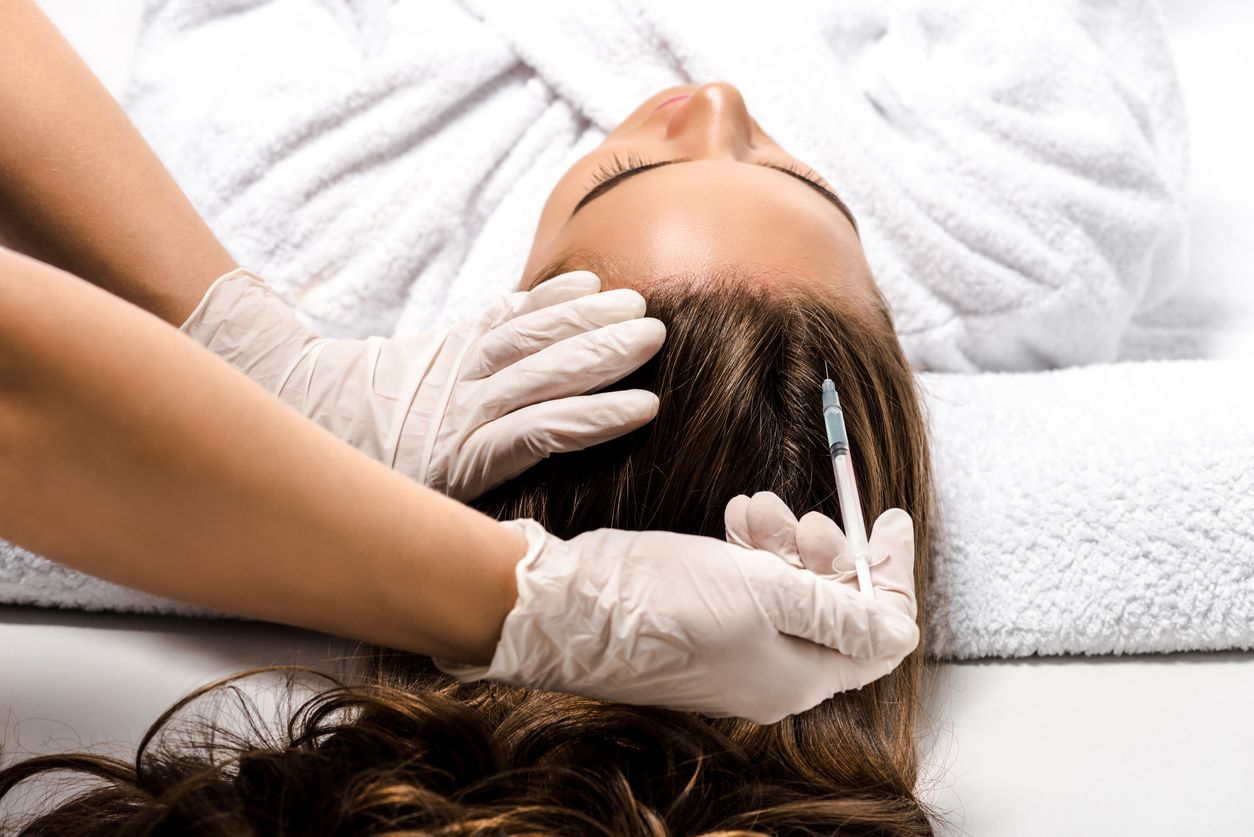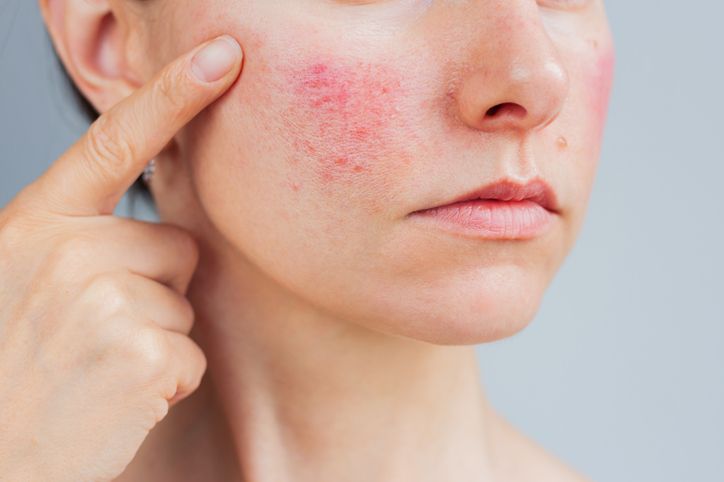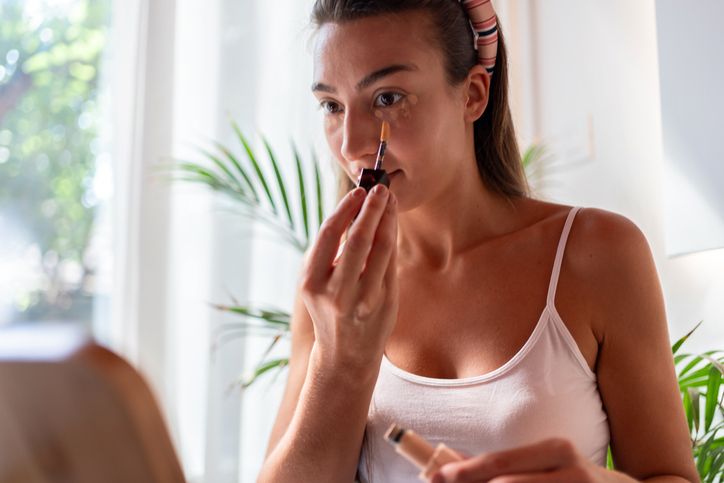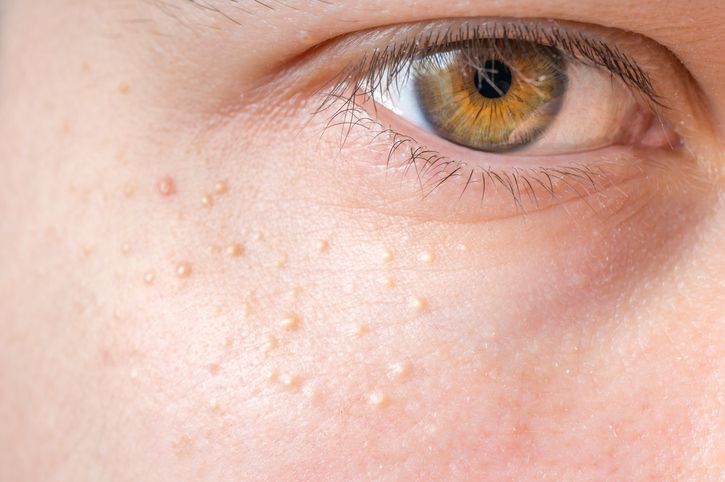- Home
- Trend
- Weight Loss Strategies
- Acne Tips
- Hair Health Information
- Blemish Removal Tips
- Acne Scar Removal Tips
- Muscle Building Techniques
- Intimate Care Tips
- Postpartum Intimate Care
- Eye Bags Wiki
- Tips for Face Slimming
- Secret of Permanent Hair Removal
- Breast Enlargement Tips
- Cure to Snoring
- Marionette Lines
- Skin-Tightening Secrets
The hair regrowth world has been abuzz in recent years with a groundbreaking treatment—RGA Hair Follicle Regrowth, a rapidly rising trend in the industry. But how does it differ from a traditional hair transplant? Let’s dive into the details of this innovative RGA technology and find out why it’s making waves.
1. What is RGA Hair Regrowth Technology?

When it comes to hair regrowth treatments, most people immediately think of options like hair transplants, oral medications, supplements, or anti-hair-loss shampoos. But recently, beyond these conventional methods, those suffering from hair thinning have a new option: the RGA Hair Follicle Regrowth Treatment.
RGA stands for Regenera Activa, a revolutionary hair restoration technology. Unlike traditional methods that often require medication, injections, or even surgery, RGA is a minimally invasive, drug-free procedure that allows for quick recovery with little to no interruption to your daily routine.
Since its launch, over 30,000 people worldwide have experienced significant hair regrowth through RGA. The results can last up to two years, and the high success rate has made it a sought-after treatment in the hair regrowth world. That’s why many hair clinics in Hong Kong have begun offering the RGA procedure—to bring the latest, most effective, and most popular regrowth solution to the public.
2. How Does RGA Hair Regrowth Work?

So what makes RGA such a “revolutionary” hair regrowth technology? To understand its effectiveness, you first need to know about the concept of “hair growth factors.”
Put simply, hair growth factors are the vital components extracted from healthy hair follicles that can stimulate new hair growth. RGA uses a combination of expert technique and advanced medical equipment to extract a small amount of scalp tissue, rich in these growth factors. The sample is then processed to multiply the growth factors, which are re-injected into thinning areas of the scalp.
These growth factors act like “hair seeds”—they trigger the regeneration of blood vessels in the scalp and nourish the surrounding follicles, helping hair to regrow. RGA is effective for various types of hair loss, including androgenetic alopecia (male pattern baldness), receding hairlines, stress-induced shedding, and overall thinning.
The RGA procedure is certified by Japan’s FMA and the EU CE, ensuring its safety. It is administered by qualified doctors who ensure the quality and quantity of the extracted growth factors. The survival rate of these growth factors can reach up to 93%, significantly enhancing the treatment’s effectiveness and improving the odds of visible hair regrowth. In today’s tech-driven world, science not only makes life easier—it also gives hair loss sufferers a renewed sense of hope.
免費體驗
F8 Hair Regrowth Treatment
1 Minute Self-Registration
Date should not be before minimal date
3. Step-by-Step Guide to the RGA Hair Follicle Regrowth Procedure
Many people are curious about what actually happens during a hair regrowth treatment—especially something as new as RGA. If you’re wondering how hair growth factors work to enhance regrowth, here’s a transparent walkthrough of the RGA process:
Pre-Treatment Prep:
1. If you’re confirmed to be a candidate for RGA, you should stop using all hair regrowth products—including serums and medications—at least two weeks before the procedure. You should also avoid hair styling products for one week before treatment.
2. On the night before or the morning of the treatment, thoroughly wash your hair and scalp to ensure they are clean and ready.
On the Day of the Procedure:
2. Upon arriving at the clinic, a doctor will assess your scalp and hair follicles to ensure you're suitable for the treatment. They will also check your blood sugar levels, as elevated levels can impair wound healing after the procedure.
The 3 Stages of RGA:
• Step 1: The doctor will shave a coin-sized area at the back of your scalp (near the hairline) and extract a 2g tissue sample using professional medical techniques.
• Step 2: This sample is placed into the RGA device, where it undergoes high-speed processing to isolate and multiply growth factors. This only takes about 3 minutes.
• Step 3: The resulting "hair seeds" are then injected into the thinning areas of your scalp. These growth factors can revitalize an area as large as 500cm²—about the size of two palms! The doctor will then massage your scalp to evenly distribute the growth factors and enhance their absorption for better regrowth.
Post-Treatment Care:
1. Since the procedure creates micro-wounds on the scalp, do not wash your hair for 24 hours, and avoid getting the treated area wet.
2. For one week post-treatment, avoid using medicated hair products and reduce activities that cause heavy sweating, such as swimming, hot springs, or wearing hats.
4. What to Watch Out for When Choosing the RGA Hair Regrowth Treatment?
With more and more hair clinics offering the RGA follicle regrowth treatment, it can be hard to know which one to choose. There are several important considerations to keep in mind—not just for RGA, but for selecting any hair regrowth center. Here's how to be a savvy consumer and avoid costly mistakes:
1. Choose A Reputable Clinic
Hair clinics in Hong Kong are everywhere, ranging from major chains to small independent operations. Any establishment offering hair regrowth treatments can call itself a “hair clinic,” but how many truly have a strong reputation and proven reliability?
Since RGA treatment involves creating a small incision and comes with some safety considerations, it’s best to choose a clinic with credibility—ideally one with an established track record, corporate backing, or years of expertise. For example, Perfect Medical is a publicly listed aesthetic medical group in Hong Kong with 19 years of experience and has recently introduced the RGA Hair Boosting Treatment. Those interested can look into it further.
2. Ensure The Procedure Is Doctor-Supervised
RGA is not entirely non-invasive; the process may involve minor bleeding, which technically classifies it as a surgical procedure. Therefore, make sure the treatment is carried out under the supervision of a qualified doctor to guarantee safety.
3. Pay Attention To Pricing
Naturally, consumers want the best treatment at the best price. But some clinics have been known to drastically inflate prices or lure customers with low entry fees only to upsell expensive packages later, leaving clients caught off guard.
Since RGA is a cutting-edge hair regrowth treatment, it’s unlikely to be cheap. In Hong Kong, RGA treatments generally start around HK$50,000–$60,000. Prices may vary slightly depending on the specific services required, so if you come across RGA treatments priced unusually low, proceed with caution.
4. Be Wary Of Hard-Sell Tactics
Some beauty and hair clinics have a poor reputation for aggressive sales tactics—pressuring customers into purchases, grabbing credit cards to charge without full consent, or even not letting clients leave unless they buy something. While these extreme tactics have become less common, you should still watch out. If staff use high-pressure or exaggerated marketing during consultations, it’s best to walk away.
5. Ensure The Clinic Maintains High Hygiene Standards
Hygiene is more important than ever, especially with treatments that involve minor scalp wounds. RGA should always be performed in a sterile, clean environment by a medical professional. A reputable clinic would never perform the procedure in an unsanitized room. Poor hygiene could result in bacterial infections and compromise treatment results.
6. Always Go For A Pre-Treatment Consultation
Consultations are an excellent opportunity to understand the treatment, check out the clinic’s environment and practices, assess the staff’s professionalism, and clarify pricing and safety credentials. It’s also a crucial checkpoint: RGA requires viable hair follicles to extract growth factors. If your hair loss is too advanced and the follicles are already dead, you might not be a suitable candidate for RGA.
5. How Does RGA Compare with Hair Transplant Surgery?
Since the launch of RGA follicle regrowth technology, many people have compared it with traditional hair transplants. While there are similarities in concept, results, and procedure, there are also key differences. Here's a detailed comparison:
1. Underlying principle
Hair transplant surgery has been around for decades and is a go-to treatment for many dealing with hair loss. It involves harvesting healthy follicles from donor areas of the scalp—either via strip removal or follicular unit extraction—then transplanting them to balding areas.
RGA, on the other hand, also extracts healthy cells from the scalp, but focuses on isolating growth factors. These are then injected into thinning areas to stimulate vascular regeneration and restore the scalp’s health from the root, improving hair growth at its source.
2. Results
A successful hair transplant delivers natural-looking results, which is why it remains popular. When done well, the new hair looks just like the original and blends in seamlessly. However, results depend heavily on the surgeon’s skill—poor technique can lead to unnatural, patchy outcomes.
RGA, by contrast, doesn’t transplant follicles but uses growth factors to stimulate natural regrowth. This avoids issues like overly dense or sparse regrowth or unnatural hairlines, offering a smooth, even outcome.
3. Speed of results
Hair transplants usually require at least 6 months before new hair starts to grow. Full results may take 12 to 18 months to stabilize.
RGA delivers faster outcomes—new hair may begin growing as soon as 3 months post-treatment, and effects can last up to 2 years. For those looking for quicker, long-lasting improvements, RGA offers a compelling alternative.
4. Safety
Hair transplants can raise safety concerns due to the larger wounds involved. There's a risk of infection, folliculitis, or in severe cases, non-regrowth in the affected areas.
RGA involves only a small incision near the back hairline, making it significantly less invasive. The smaller wound means faster healing and a lower risk of complications.
5. Convenience
Hair transplants typically require a full day and a longer recovery period. Most patients need to take time off work and may experience bleeding or discomfort for days afterward.
RGA, however, takes just 30 minutes and has minimal downtime. Aside from avoiding washing your hair or wetting the wound for 24 hours, you can resume your daily routine immediately—perfect for busy individuals who can’t afford to take time off.
免費體驗
F8 Hair Regrowth Treatment
1 Minute Self-Registration
Date should not be before minimal date
6. 4 Common Misconceptions About RGA – Must-Read Before You Try It!
Since RGA is a relatively new technology, it’s natural for people to have doubts—whether it’s truly effective or safe. Here are four of the most frequently asked questions to help you make an informed decision:
Myth 1: Do You Need Anesthesia For RGA?
Different clinics may take different approaches, but most RGA sessions don’t require injections for anesthesia. The scalp wounds are tiny and don’t require stitches, so any discomfort is usually minimal. To reduce redness or swelling when injecting the growth factors, numbing cream or cold packs are often used. Overall, RGA treatments don’t cause significant irritation.
Myth 2: How Successful Is RGA?
According to Regenera Activa’s manufacturer, the extracted growth factors have a viability rate of up to 93%, which greatly enhances the chances of successful hair regrowth. To date, over 30,000 cases have been documented, with a satisfaction rate of 79%—far higher than what’s typically seen with topical treatments or oral medication.
Still, RGA isn’t a guaranteed solution. It’s best to consult a professional hair specialist beforehand to understand your suitability and expected results.
Myth 3: Is RGA Unsafe Because It Lacks FDA Approval?
Some concerns have been raised about RGA lacking FDA certification. While the treatment is registered with the FDA, it is not formally “approved.” However, it has received international certifications from Japan’s FMA and the EU’s CE, verifying both its effectiveness and safety. Plus, the procedure is always doctor-supervised, giving users additional peace of mind.
Myth 4: Is RGA Only For Those With Severe Hair Loss?
Not at all! Many assume RGA is a “last resort” when all else has failed, but this is a misconception. RGA works best when started early—before the follicles have completely died. As long as your follicles are not fully atrophied, growth factors can still stimulate new hair. Starting early can rescue weakened follicles and prevent further hair loss, so don't wait—get assessed by an expert as soon as possible.
7. Not Ready for RGA? You Can Still Support Your Hair Health!
If RGA seems unnecessary for now but you're still concerned about hair thinning or want to prevent future hair loss, there are gentler alternatives available.
In addition to the RGA treatment, Perfect Medical also offers the F8 Hair Regrowth Treatment, which uses low-level laser therapy (LLLT). This treatment penetrates deep into the scalp, reactivates dormant follicles, strengthens capillaries, and improves blood circulation—supporting thicker, healthier hair from the root.
The F8 therapy also incorporates world-class hair growth serums that help balance scalp oil production, keep the scalp clean, and reduce follicle blockages that can lead to hair loss. It’s an excellent daily scalp care solution even if you don’t need RGA.
Right now, Perfect Medical is offering a limited-time free F8 treatment trial, including a personalized scalp and follicle analysis by a hair specialist. Simply sign up and experience it for yourself!
Get Your Trial Now: Perfect Medical F8 Hair Regrowth Treatment免費體驗
F8 Hair Regrowth Treatment
1 Minute Self-Registration
Date should not be before minimal date
FAQ

What kind of results can I expect from RGA?
RGA works by extracting a small amount of growth factors from your scalp and amplifying them, then injecting them into hair-thinning areas. This stimulates vascular regeneration and promotes the growth of strong, natural hair. The treatment encourages even, natural-looking regrowth without creating unnatural hairlines or overly dense patches.
Do I need special aftercare after RGA?
Yes. For the first 24 hours post-treatment, you should avoid washing your hair or getting the treated area wet. For the next 7 days, avoid medicated hair products and activities that cause excessive sweating, such as hot springs, swimming, or wearing tight hats.
Is RGA unsafe because it lacks FDA approval?
While RGA is registered with the FDA, it is not FDA-approved. However, it has received certifications from Japan’s FMA and the EU’s CE, proving it meets international safety and efficacy standards. The treatment is performed by licensed doctors, ensuring a safe experience.
Can I get RGA if I’m experiencing hair loss?
Yes, RGA suits most people with hair loss, as long as your follicles haven’t completely died off. The sooner you start, the better the results, since early treatment can help reverse follicle weakening and slow further hair loss. A professional consultation is key to determining if you’re a good candidate.
Which treatment shows faster results—RGA or hair transplants?
Hair transplants generally require 6–18 months to show full results. In contrast, RGA can begin showing new hair growth within 3 months, with effects lasting up to 2 years. For faster and longer-lasting improvements, RGA is a strong option.









